Memory loss – your diet may be to blame
 General
General
We need to process your personal information for you to interact with this website. We also use Cookies to enhance your experience. Please accept the Website Ts and Cs and Data Protection and Privacy Policy to fully access the website.
Christo van Zyl, a Sport Scientist in the Sport, Exercise Medicine and Lifestyle Institute (SEMLI) at the University of Pretoria, shares valuable advice and a few great warm-up exercises to prepare for the Bestmed TuksRace 2023.
“Make sure you warm-up properly or you will get injured” – a statement heard at nearly every event where a mom, dad or coach has pre-race chats with their kids. A statement that has been disproven time and time again. While it is true that longer more pliable muscles can reduce the risk of injury, this cannot be achieved with a single stretching session right before your race. These adaptations need time to happen.
How dare I promote warm-ups and still say it does not stop you from getting injured?
While there are plenty of benefits to warming up in a structured way, acute injury prevention is not one of them. Probably a better and more accurate motivation for consistently running a structured warm-up before a main set and race day is for the performance benefits it provides acutely. Yes, we have all heard the stories of athletes who were late to an event and went on to race personal bests (PBs) and even records without any form of warm-up. Truth be told, when pushed for time, athletes can get away with minimal warm-up. This, however, is only true for race day. Away from the crowds and cameras when work needs to be done consistently day in and day out, athletes go through very extensive warm-ups to make sure that all the basics are covered. This leads to long-term performance gains and reduced risk of injury. Therefore, by warming up in a structured manner consistently, these athletes gave themselves the best opportunity to get away with not warming up on race day, when time is an issue, and still run record times.
“Okay, so I will just warm-up during training and skip it completely on race day.” Here is why this is not the case…
The warm-up has many benefits when done right. Muscle imbalances are addressed, joint range of movement is improved and movement mechanics are facilitated. Diving into some of the physiology behind a structured warm-up (don’t worry, this won’t be some paper that I write trying to impress you with all the fancy scientific words), we find that the long-term performance and injury reduction mechanisms associated with warming up can be attributed mostly to increased temperature within the soft tissues (muscles, tendons, ligaments). This increase in temperature is due to a combination of increased fuel metabolism within the active muscles, as well as the friction of the contracting muscles. Elevated body temperature can lead to various positive acute adaptations. Warmer muscles and increased internal body temperature produce faster, more powerful contractions, nerve impulses are facilitated and haemoglobin releases more oxygen, which means greater oxygen-carbon dioxide exchange in the muscles. As a result of this carbon dioxide build-up, faster deeper breaths are stimulated, enhancing gas exchange in the lungs. This means more oxygen diffuses into the blood, while more carbon dioxide diffuses out of the blood. Muscular pliability is also increased which means decreased muscle damage and thus less muscle soreness following a workout. All of the above-mentioned are acute adaptations, which mean better performance on the day. Alongside the performance “gains,” the warm-up offers an environment where you as an athlete can start preparing mentally for the race. Better focus and a stimulated nervous system allow the body to react to uncontrollable circumstances like stepping in a ditch, tripping or an accidental collision at a packed starting line.
Other non-thermogenic responses include increased blood flow, improved muscular coordination through repeated movements, better range of motion and fewer overall imbalances. The combination of these could lead to a reduction in injury risk in the long term.
I’m convinced! But where do I start?
The best place to start is to understand how to structure a warm-up. There are a couple of components that need to be included in a warm-up to ensure all the wonderful things mentioned above are in place. These can be covered over the course of a week or all in one session. As long as they are addressed regularly, they will provide a good foundation to build your main sets on (and hopefully that PB on race day). The six components are:
1. tissue quality
2. activation
3. corrective exercises
4. thermogenic
5. stretching
6. neural preparation.
1. Tissue quality
Using massage techniques before training sessions can begin to repair soft tissue damage from previous sessions and get the muscles ready for the subsequent action. The most readily accessible example of this is foam rolling. It is also not uncommon to have a light rubdown in place of foam rolling, but who has extra people hanging around just to provide a pre-session rubdown?
Foam rolling


2. Activation
As with any collaboration, you will often find dominant and non-dominant role players working together. The muscles are no different. A reliance on the dominant or overactive muscle groups can lead to imbalances. This makes activation of these weaker stabilising muscles essential when trying to maximise performance. Activation can also act as a way to prepare the main muscles involved during the planned activity for what is to come. Squats, lunges and glute bridges target the larger muscle groups of the legs and prepare them for the run to follow.
Bodyweight squat


Lunges

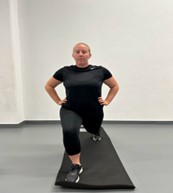

Glute bridges


3. Corrective exercises
Corrective exercises address movement restrictions currently in place. Among others, they focus on range of motion (ROM) and include various stretches. These are useful to use in a warm-up as when an athlete is learning the correct movement pattern, muscular coordination is improved through repeated movement patterns. Corrective deep squats single-leg Romanian deadlifts (RDL) and single-leg glute bridges address the most common problems from repetitive long-distance running. This includes tight hips and ankles, poor strength of smaller muscles around the knee and overall weak gluteus medius muscles.
Deep squat corrective



Single leg RDL


Single leg glute bridge
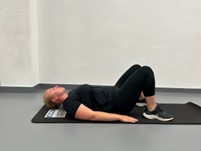
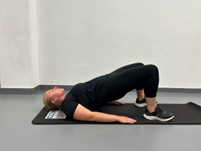
4. Thermogenic
Thermogenics is increasing soft tissue temperature during a warm-up. If done correctly, you should be sweating lightly, which indicates that the body's cooling system has been activated. Your heart rate should be elevated and you should be breathing slightly heavier than normal when done with this component.
High knees
Short-distance runs at different intensities
5. Stretching
Stretching is the lengthening of muscle fibres to improve range of motion. Dynamic stretching is a form of stretching where there is constant movement through a ROM. This has been shown to be the most effective stretching technique for use during warm-ups. There are so many of these stretches, so I am just going to list that that I am personally a big fan of.
"World's Greatest Stretch"

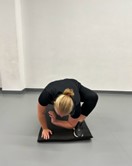

Inchworms



Leg swings


6. Neural preparation
These include any exercise that acutely enhances muscular force output. This means doing exercises that require rapid movement that allows for facilitated communication between the brain and the muscles. This should ultimately lead to muscles that are able to contract in a more synchronised fashion at a faster rate (we want this to be able to run faster).
Squat jumps
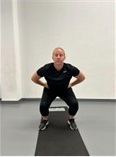


Bounding


Single leg jumps



There is no right or wrong way to get through these components, as long as they are all addressed in some form or fashion throughout a training week.
Hopefully by now the old-fashioned thinking of “we should warm-up not to get injured” is no longer your first thought when convincing yourself to warm-up. Rather, warm-ups should be seen as an integral part of training, where you get to work on specifics that very seldom get addressed within your main set. Working to structure warm-ups in this fashion not only makes the session more structured and thus more enjoyable, but also decreases the risk of injury in the long-run.
References
McGowan, C.J. et al. 2015. Warm-up strategies for Sport and exercise: Mechanisms and applications. Sports Medicine, 45 (11), pp. 1523–1546. Available at: https://doi.org/10.1007/s40279-015-0376-x.
Bishop, D. 2003. Warm-up II. Sports Medicine, 33 (7), pp. 483–498. Available at: https://doi.org/10.2165/00007256-200333070-00002.
Joyce, D. & Lewindon, D. 2022. High-performance training for sports. Champaign, IL: Human Kinetics Inc.
Christo van Zyl, MSc Sport Science (University of Pretoria):

Sport Scientist at Sport, Exercise Medicine and Lifestyle Institute (SEMLI)